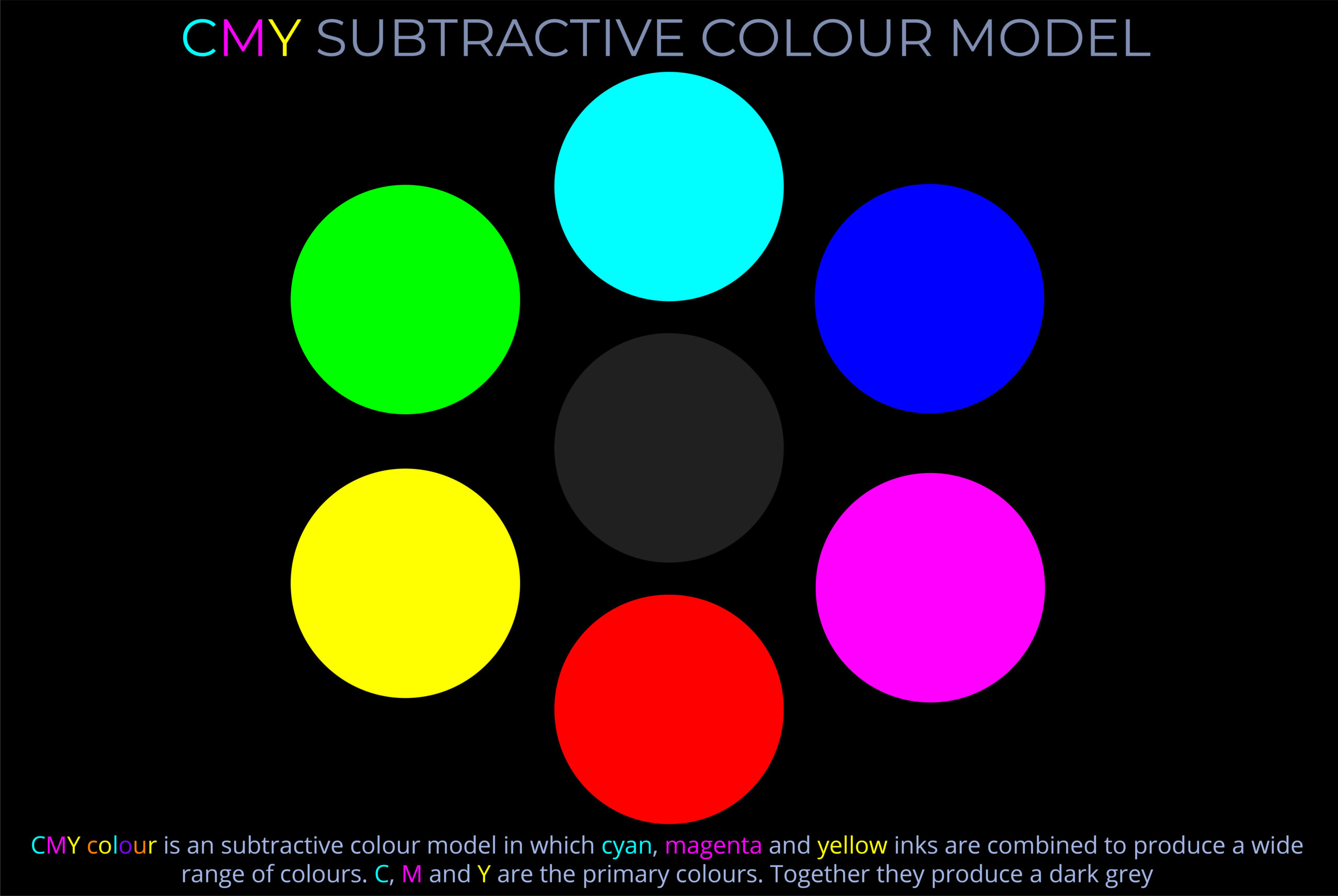A secondary colour is created by mixing two primary colours in equal parts within a particular colour model. The colour space can belong to either an additive colour model, which combines different light wavelengths, or a subtractive colour model, which mixes pigments or dyes.
- In additive colour models such as the RGB colour model, which deals with the effects of mixing coloured light, a secondary colour results from the overlap of the primary colours: red, green, and blue. The secondary colours produced by mixing pairs of primary colours in the RGB model are cyan, magenta, and yellow. This model is used in devices like computer monitors, TVs, and digital cameras, where light is emitted directly to form images.
- In subtractive colour models such as the CMY colour model, which is concerned with mixing dyes and inks, a secondary colour results from the overlap of the primary colours: cyan, magenta, and yellow. The secondary colours produced by mixing pairs of primary colours in the CMY model are red, green, and blue. This model is used in printing processes, and is commonly extended to CMYK (with black added) to enhance contrast and accuracy.
- Additive mixing involves adding coloured light sources together, with all colours combined resulting in white light. Subtractive mixing, on the other hand, removes or absorbs certain wavelengths of light, with all colours combined resulting in black or dark brown.
- Additive models like RGB affect human perception of light sources (like screens), while subtractive models like CMY are used to describe reflected light (as seen in printed images).


